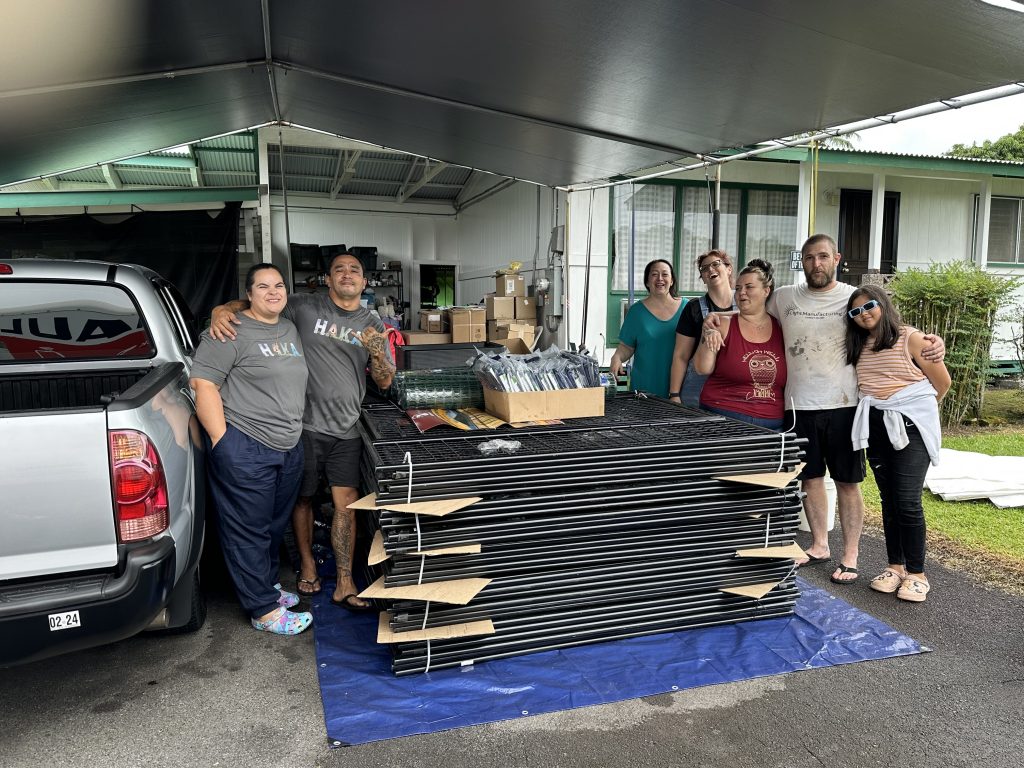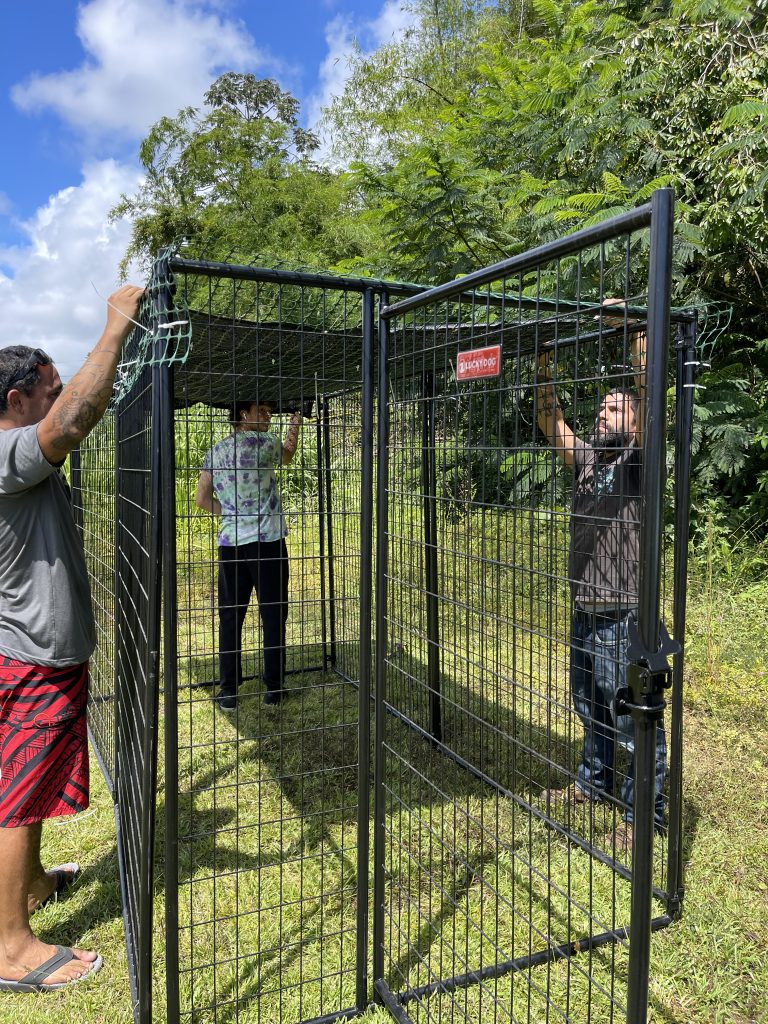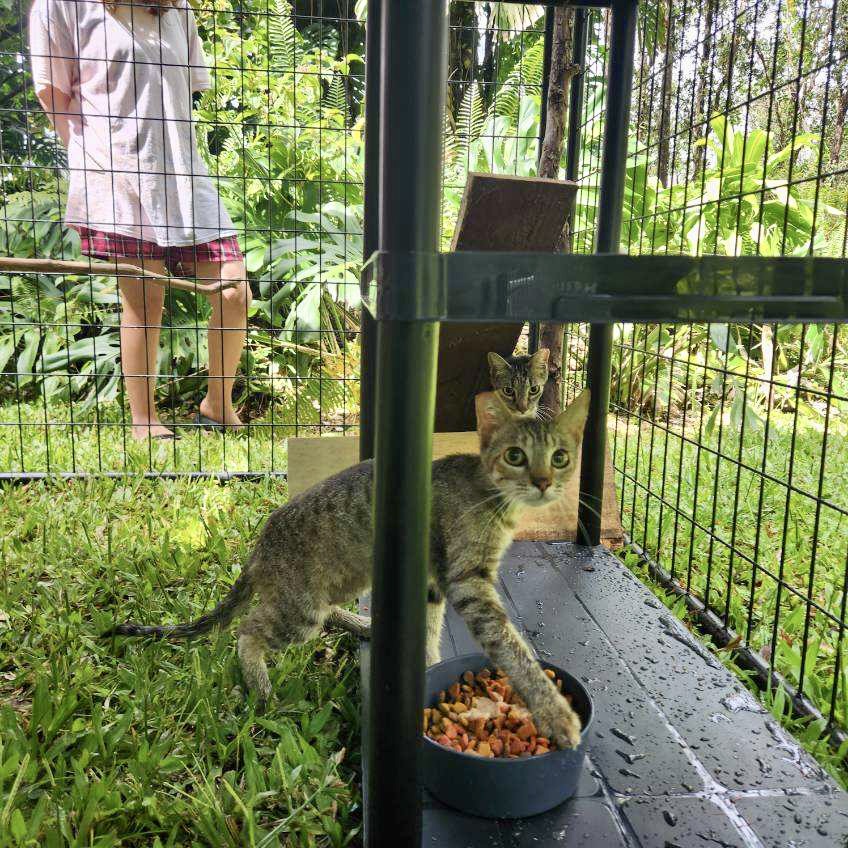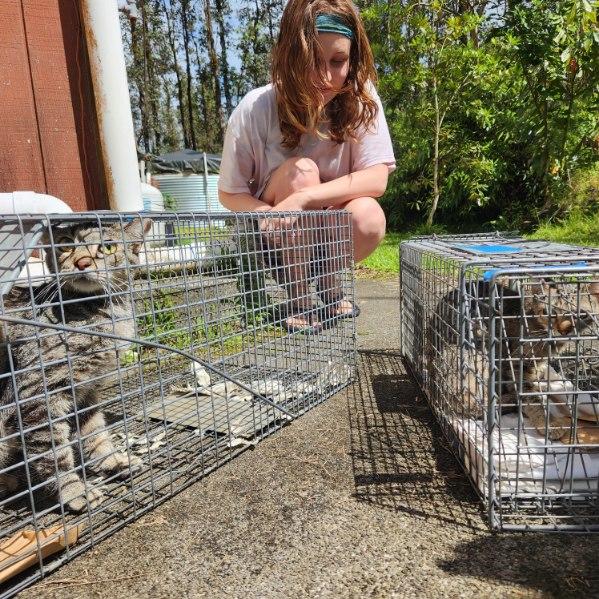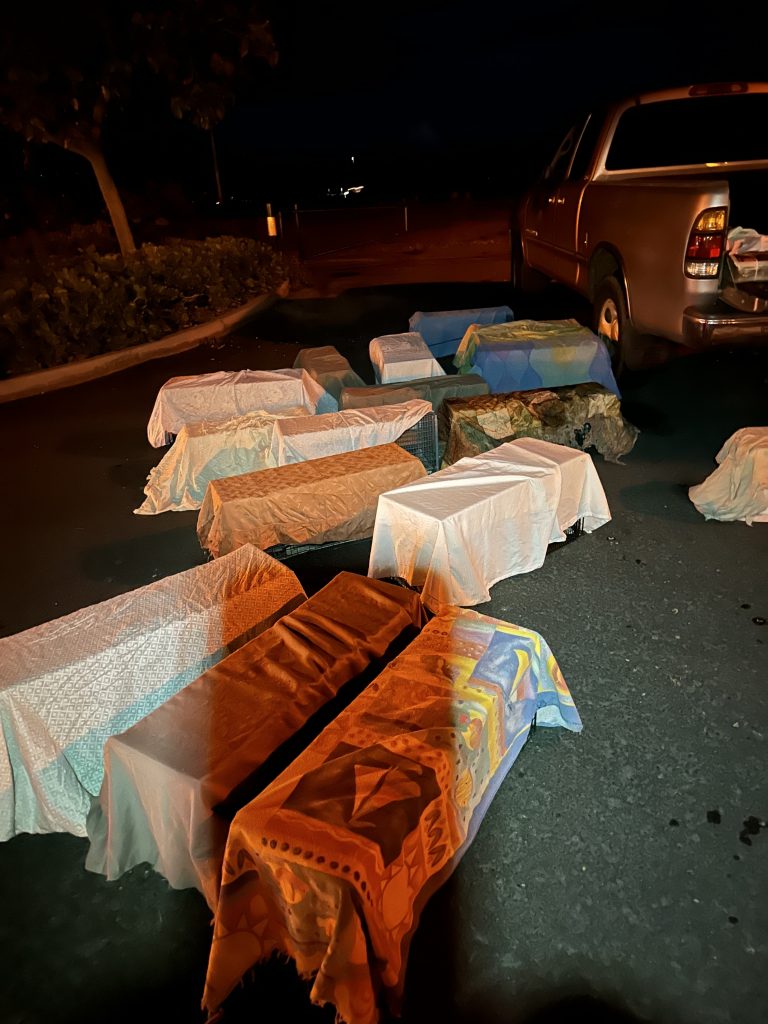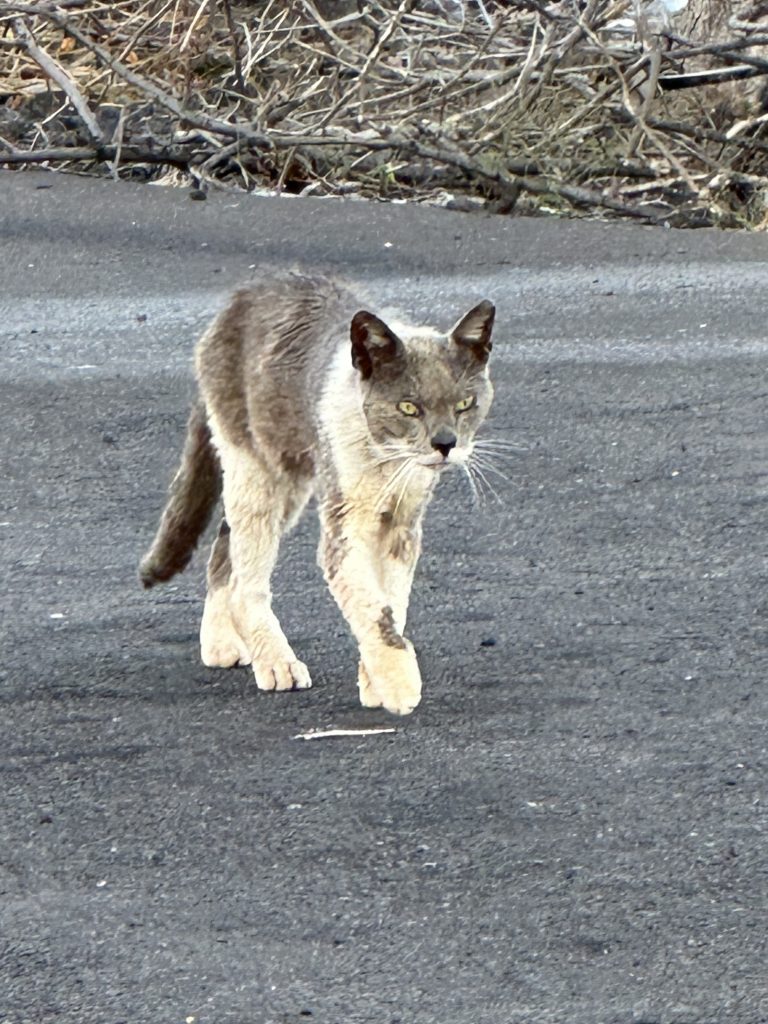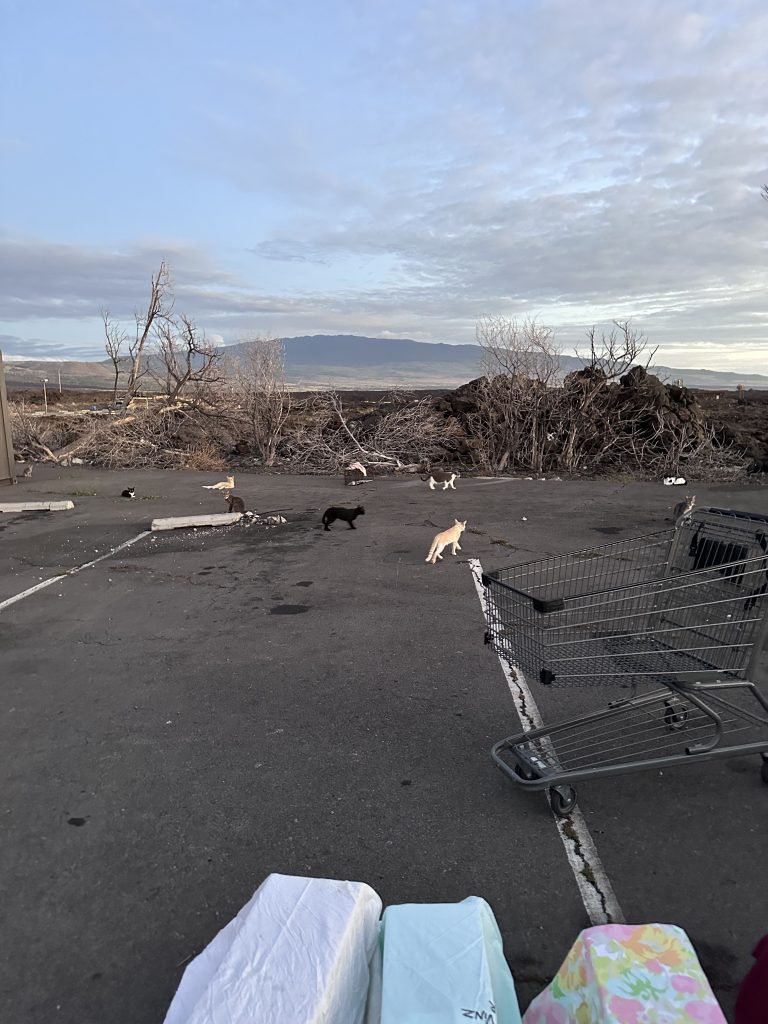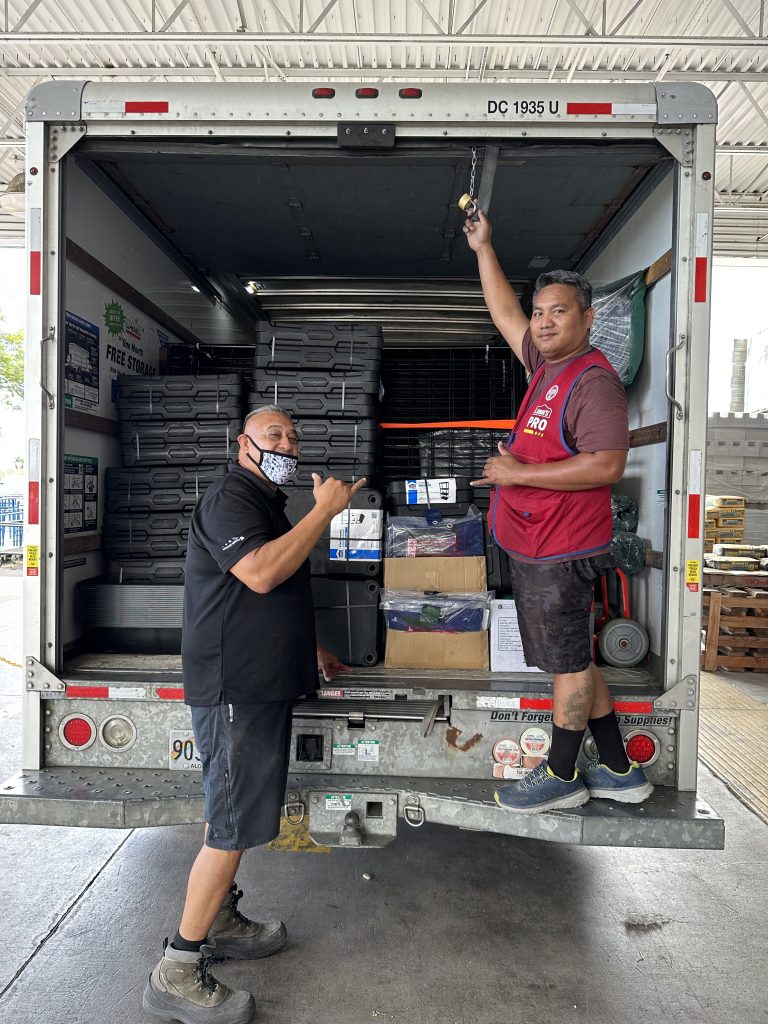64 cats, kittens captured at Queens’ Marketplace; relocated to Big Island homes

Last weekend, two animal rescue organizations captured 64 feral cats and kittens at Queens’ Marketplace in Waikōloa Village and had them spayed/neutered, vaccinated and microchipped.
The organizations — Aloha Animal Oasis and Hawai‘i Animal Kuleana Alliance — then delivered the felines to new homes across Hawai‘i Island.
The relocation project was created in response to the Hawai‘i Department of Land and Natural Resources’ prohibition of cat feeding in the area due to the increased presence of endangered nēnē, the state bird of Hawaiʻi.
For many years, as the population grew, volunteers and an area animal rescue had regularly fed and watered the cats around Queens’ Marketplace, owned by Alexander & Baldwin.

The feeding ban that began in April led to a protest by about 50 people who chanted: “Stop starving the cats.” Two women from Waikōloa were cited by state conservation and resources officers for “prohibited take of endangered species” by putting bowls of cat food on the ground.
Even Hawai’i Gov. Josh Green got involved, sending Dawn Chang, chair of the Department of Land and Natural Resources, to Waikōloa to explain the state’s position.
The numbers of nēnē began to increase throughout 2022, with the birds becoming noticeably more interested in the cat feeding stations in the months leading up to the feeding ban.

The Department of Land and Natural Resources provided flyers in the Waikōloa area elaborating on the reasoning for not allowing the feeding. They included: cat food is not a natural diet item for nēnē; cat feeding affects the natural behaviors of nēnē, bringing them into close contact with people and roads, exposing them to dangers from vehicles, dogs, feral cats, and mongoose; feeding ‘habituates’ nēnē to humans, leading to separation from their natural environment and further reliance on feeding stations.
The state offered relocation as the only real option for the cats, spurring local animal advocate Melanie Thomas to engage with the animal rescue organizations and key stakeholders in finding a solution.
Alexander & Baldwin, DLNR, Hawaiʻi County Animal Control Director Regina Serrano and state Sen. Tim Richards played vital roles in making the project happen, according to a joint press release from the rescue organizations.
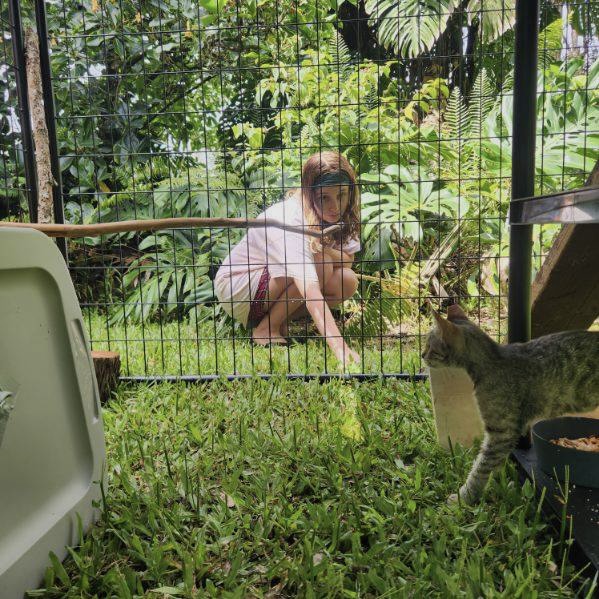
After an online campaign to solicit adopters, the team found 17 homes for 64 cats and kittens, stretching from Ocean View to Honoka‘a, Hawaiian Paradise Park to Captain Cook.
Cat and kitten adopters were provided large outdoor kennels (on loan), food, litter and other supplies to get the cats off to a good start in their new homes. All cats were spayed or neutered at a private clinic by partner organization PetFix Spay & Neuter. They also were tested for FIV/FeLV, vaccinated and microchipped during the clinic, the press release said.
“Although numbers are very difficult to determine, we estimate around 100 cats remain in the Queens’ Marketplace area,” said John Hopf, President of Aloha Animal Oasis. “Our first trapping weekend was very successful, and we are overjoyed that these 64 kitties will be finding their forever homes in safe places where they can be lovingly cared for.
He said more could have been trapped, but the number was limited “by the amount of homes that we were able to secure for the cats.”
Last weekend’s relocation project is the first of several trapping and relocating events the organizations anticipate hosting. They are looking for adopters, volunteers and donors to assist with future relocation projects that will likely stretch throughout the summer.
Richards said in the press release: “I humbly ask our community to encourage 100 households to adopt the remaining cats at Waikōloa, benefiting both the cats and our native species. One of my own cats is from the Waikōloa area!
“By opening our hearts and homes, we can make a profound impact on their lives and ensure balance in our beautiful island’s ecosystem.”
The organizations said that last weekend’s relocation was successful but barely made a dent in the number of feral cats around the Big Island.
Syndi Halualani-Texeira, executive director of Hawai‘i Animal Kuleana Alliance, said: “Hawai‘i Island has a tremendous problem with pet overpopulation. Taking care of our pets by spaying/neutering, microchipping and safely containing them is the humane way that we, as a lāhui, are going to make Hawai‘i Island safe for both our native species and our pets.
“To make that happen, however, we have some fundamental issues that need to be addressed by our policymakers and stakeholders; our Island lacks the necessary spay/neuter and microchip services to meet the demand of pet owners and rescue organizations.”
For more information about adopting, donating, or volunteering to this effort, please click here.
Learn more about nēnē here.
Sponsored Content
Comments






